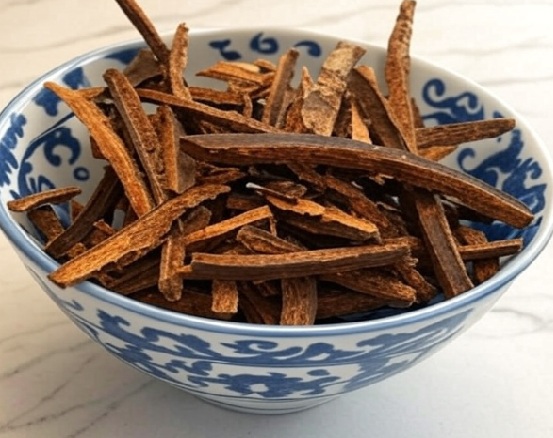Magnolia Bark Chinese Herb

Magnolia Bark (Hou Po): A Qi-Regulating Herb for Bloating, Phlegm, and Digestive Stagnation
Introduction
Magnolia bark, known as Hou Po (厚朴) in Traditional Chinese Medicine (TCM), is a warm and aromatic herb used to promote qi movement, resolve dampness, and transform phlegm. It is especially effective for abdominal bloating, fullness, nausea, and coughing caused by phlegm or food stagnation. With its pungent and dispersing properties, Hou Po is a foundational herb for improving digestion and easing respiratory discomfort.
What Is Magnolia Bark?
Hou Po is the bark of the Magnolia officinalis tree, native to China and parts of East Asia. In TCM, it is classified as bitter, acrid, and warm, and it enters the Lung, Large Intestine, Spleen, and Stomach meridians. Traditionally, magnolia bark is used to move qi, dry dampness, direct rebellious qi downward, and calm wheezing. It is often paired with other qi-regulating or damp-resolving herbs in digestive and respiratory formulas.
Health Benefits of Magnolia Bark
Promotes Qi Movement and Relieves Bloating
Used for sensations of fullness, distention, or pressure in the abdomen or chest due to stagnant qi.
Dries Dampness and Transforms Phlegm
Effective for damp, sluggish digestion and phlegm-related cough or congestion.
Directs Rebellious Qi Downward
Helpful for nausea, vomiting, hiccups, or acid reflux due to Stomach qi rising in the wrong direction.
Calms Wheezing and Cough
Supports Lung function in cases of cough or asthma related to phlegm-dampness.
Improves Bowel Function and Digestion
Often used for constipation caused by qi stagnation or dampness in the intestines.
How to Use Magnolia Bark
In Decoctions for Bloating or Cough
Use 3–9 grams with herbs like Chen Pi, Ban Xia, or Fu Ling. Simmer for 20–30 minutes.
In Digestive and Respiratory Formulas
Found in well-known formulas like Ping Wei San and Ban Xia Hou Po Tang for digestive dampness or throat phlegm.
In Granule or Capsule Form
Available in concentrated extracts or digestive blends for gas and phlegm support.
Where to Buy Magnolia Bark
You can find Hou Po at the following places:
- Chinese herbal medicine shops
- Natural apothecaries and digestion-focused wellness stores
- Online retailers such as iHerb, Amazon, or TCM-specific suppliers
Look for:
- Thick, curled bark slices with a strong aromatic scent
- Properly dried and free from mold or chemical treatment
- Organic or wildcrafted sources when available
Are There Any Side Effects?
Magnolia bark is generally safe when used in appropriate amounts, but its strong qi-moving action may cause dryness or digestive discomfort in those with yin deficiency. It should be used with caution during pregnancy, especially in early stages. Long-term use is best supervised by a practitioner.
Conclusion
Magnolia bark, or Hou Po, is a warming, dispersing herb in TCM that treats digestive stagnation, damp accumulation, and phlegm-induced respiratory issues. Whether used for bloating, nausea, or cough, its strong aromatic action helps restore downward qi flow and relieve pressure and fullness in the body.
FAQs
Can I take magnolia bark every day?
It can be taken short-term for digestive relief or phlegm conditions, but long-term use should be monitored by a qualified practitioner.
What does magnolia bark taste like?
It has a strong, bitter-spicy taste with a distinctive aromatic bite.
Is magnolia bark safe for children?
Yes, in lower doses and under supervision, usually as part of a formula for digestion or phlegm-related conditions.

